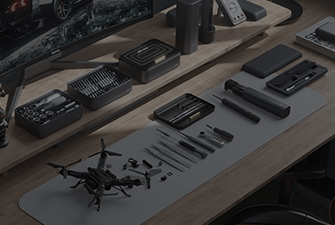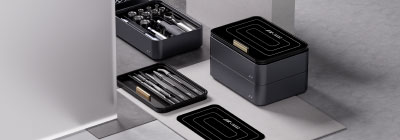
A properly stocked toolbox forms a craftsman's chief possession for fundamental tasks like measuring wood to driving screws with precision. This handbook delivers know-how to select fitting tools and use them efficiently.
- Launch your collection with a fundamental assortment of hand tools—hammer, screwdriver, wrench, pliers, saw, tape.
- Understand each implement's function and the particular applications they serve.
- Build competency by practicing on projects and incrementally increasing challenge.
Keep in mind investing effort to master hand tools builds your craftsmanship. With solid understanding, tools extend your capabilities, letting you achieve complex projects confidently.
Level Up Your Workflows with Power Tools
Set to enhance builds? Discover power tools where accuracy meets rapid performance. These vital machines can transform project outcomes for both veterans and DIYers. From potent drills to specialized saws, power tools deliver diverse capabilities for building projects.
- Leverage cordless impact drivers to streamline fastening and demolition jobs.
- Perfect use of reciprocating saws to achieve speedy and clean cuts across materials.
- Elevate your woodworking skills with powerful planers and jointers for smooth and precise finishing.
Apply power tools to accelerate schedules and attain impressive project finishes.
Precision Made Easy
When exactness counts, proper measuring instruments shift results significantly. From classic rulers to modern laser instruments, these tools provide dependable precision for projects. Whether expert artisan or starter hobbyist, proficiency with measuring devices yields more possibilities.
- Discover the variety of measurement instruments suited to all requirements.
- Absorb the uses and benefits tied to every variety of measuring device.
- Develop your skills in accurate measurement and application.
Tool Sets for Every Task
Regardless of experience level, the right collection of tools is necessary for project success. For diverse tasks including assembly and fastening, the perfect toolset supports accuracy and safety. To find the ideal match for your needs, consider the type of tasks you'll be performing most frequently.
Decide between a full-range set and a dedicated specialized toolkit? With your needs defined, review brands to compare features, performance and pricing. Consult online feedback and reviews from users to inform your final choice.
Through research and planning you'll identify the ideal kit to complete projects confidently.
Sharpening and Caring for Your Essential Hand Tools
Caring for tools properly is critical for craftsmen and home builders. Avoid neglect—unmaintained tools produce dull blades, defects and poor experiences. Steady maintenance preserves tool quality and lengthens productive lifespan. Always clean and clear tools of debris following use to prevent damage. Place tools in dry, protected storage to inhibit rust and corrosion.
- Sharpen your blades regularly using a sharpening stone or file.
- Oil moving components with suitable lubricant to minimize friction and wear.
- Inspect handles for cracks or damage and replace them as needed.

Applying these simple maintenance practices improves tool durability and your overall work experience.
Basic Hand Tools Every Home Workshop Needs
A well-equipped home workshop is a haven for DIY enthusiasts and hobbyists alike. Although specialized equipment helps, a core set of hand tools is vital for many jobs. Key items feature a quality hammer, a multi-purpose adjustable wrench and a durable tape measure for exact measurements. Don't forget about screwdrivers in various sizes, pliers for gripping and twisting, and a utility knife for cutting through materials. A capable saw handles precise cutting and a level preserves alignment and straightness.
- Home Workshop Essentials: Hand Tools

Unveiling Power Tool Safety: Your Ultimate Resource
Power tools are influential devices that supply major power and operational efficiency. But these machines also need an in-depth awareness of safety measures. Ignoring safety steps might result in major injuries. This handbook clarifies safety for power tool use and provides practices to work safely.
Initiate by becoming acquainted with tools, read instructions thoroughly and learn safety elements. Always wear appropriate personal protective equipment (PPE), including safety glasses, hearing protection, and gloves. Keep tools maintained consistently to ensure they function correctly.
Recall that safety stands as the primary concern in workshop settings. By following these guidelines, you can work with power tools safely and confidently.
Selecting the Right Measuring Tools for Accuracy
For securing exact measurements, the instruments you choose matter greatly. A range of measurement tools exists, each intended for particular uses. Understanding the characteristics of different tools is essential to make an informed decision. Factors such as accuracy, resolution, and measurement type should be carefully evaluated when selecting the right tool for the job.
- When measuring length accurately, a ruler or tape is the standard choice.
- For angles, a protractor is an indispensable tool.
- Calipers—especially digital—are perfect for measuring small features.
By carefully selecting the appropriate measuring tools, you can ensure accurate and reliable results.
Choosing The Ultimate Tool Set

Starting the process of selecting a toolkit can feel thrilling yet overwhelming. With many choices on offer it’s normal to feel overloaded. This detailed guide provides insight to help you find the ideal set for your purposes.
First off, determine which project types you'll commonly work on. Are you advanced or an amateur? Specific goal-setting simplifies choice.
- Blend both tool types where appropriate to maximize productivity and precision Consider using a mix of power and hand tools to achieve productive, efficient results Use both hand and power tools together when suitable for optimal, efficient results
- Place importance on essential toolkit items
- A quality hammer, plus mallet or sledgehammer options
- An adaptable collection of screwdrivers, wrenches and pliers is crucial
- Ruler, tape measure for precise measuring
- Tools for alignment: level, plumb bob, transit
Consider tool build materials, your budget and the maker's reputation. Remember that investing in a durable tool set is an investment in the long term.
DIY Simplified: Effective Tool Use
Starting a first DIY job may feel intimidating. However, with the right equipment and know-how, the toughest tasks can be managed. Kick off by understanding and becoming acquainted with your tools. Read guides meticulously and test out basic operations safely. Always hold safety as the chief priority. Put on safety gear—eye protection, gloves and hearing protection—to reduce risk.
When selecting tools, focus on durability and dependable build quality. Select reputable manufacturers whose tools endure and perform well over years.
Ask for tips from experienced DIYers or professionals at nearby hardware outlets. Store pros and experienced DIYers can share practical suggestions and insights for picking ideal tools.
- A maintained sharp edge equals safer tool use—keep blades honed.
- Keep tools stored and organized to avoid misplacement and harm.
- Venture into new projects to broaden DIY experience and skills
Selecting Between Power and Hand Tools: Usage Guide
When working on tasks, choosing power vs hand tools often proves challenging. While powerful power tools maximize speed and output, classic hand tools are indispensable for precise and minor work. This summary aids in selecting the most fitting tool option for the work required.
- Hand tools are ideal perfect suited for finer detailed precise work like carving, assembling fitting constructing, and intricate repairs. They also offer better improved enhanced control and are often more greater higher affordable cost-effective budget-friendly.
- Power tools excel for fast efficient tasks such as cutting, drilling and sanding large areas. They significantly lower manual labor and shorten project timelines.
Finally, whether to use power or hand tools is determined by the project, your expertise and finances. Blend both tool types where appropriate to maximize productivity and precision.
